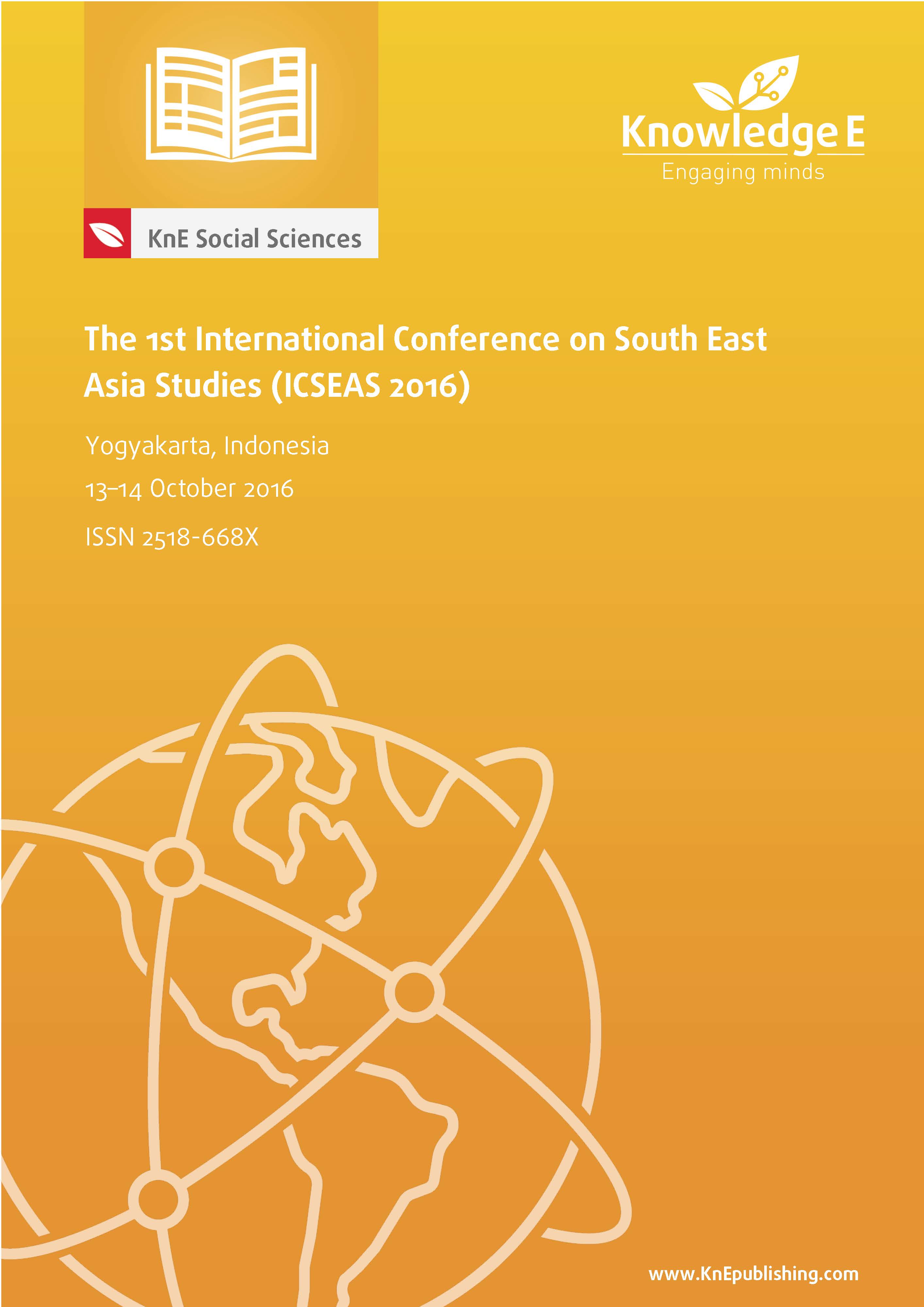Fostering Religious Exclusivism and Political Pluralism in Indonesia Through Interfaith-based Student Community
DOI:
https://doi.org/10.18502/kss.v3i5.2325Abstract
Religious exclusivism in some degree generally makes religious people to be intolerant, hardly to respect the diversity, or in other words religious exclusivism has produced social/political exclusivism. This is the real problem in a multi-religious nation like Indonesia. This paper is to show that rather to depend absolutely on the state to solve the problem; the grass-root have to be taught and empowered to be able to celebrate and respect the diversity, or in other word to be social/political pluralism. The challenge is how religious exclusivism can be compatible with political pluralism? This is the key for solving the problem of religious intolerance. This paper chooses Young Interfaith Peacemaker Community (YIPC) Indonesia, a relatively new interfaith-based student movement as a case study to show that in some degree religious exclusivism is compatible with social/political pluralism. This study is based on qualitative method, which data gathering is done through participant observation, interview and focus groups, as well as the documents. The findings show that the interfaith dialogue is the main means for peacebuilding among religions in YIPC. In conclusion, this study is significant to fill the gap about the effectiveness and impact of interfaith dialogue among youth. Here we found that interfaith relations in YIPC were able to make impact to those youth from social exclusivist to be social pluralist while they remained as religious exclusivists.
Keywords: Interfaith Dialogue, Interfaith Peacemaking, Political Pluralism, Religious Exclusivism, Student Movement
References
Smock DR. Interfaith dialogue and peacebuilding. United States Institute of Peace Press, Washington DC; 2002. p.144. https://www.usip.org/publications/2002/ 05/interfaith-dialogue-and-peacebuilding
Banawiratma J. Power and interreligious relations: An example from Indonesia. In: Religion, civil society and conflict in Indonesia. Sterkens C, Machasin M, Wijsen F (Eds.), LIT Verlag, Zürich-Berlin; 2009. p.104.
Volf M. Flourishing: Why we need religion in a globalized world. Yale University Press, New Haven and London; 2016. p.99. http://yalebooks.yale.edu/book/ 9780300186536/flourishing
Halili, Naipospos BT. From stagnation to pick the new hopes. Hasani I, Radjab SA, (Eds). Pustaka Masyarakat Setara, Jakarta; 2015. p.252. http://setara-institute. org/en/book-review/from-stagnation-to-pick-the-new-hopes/
CRCS UGM. Laporan tahunan kehidupan beragama di Indonesia 2008 [Annual report on religious life in Indonesia 2008,Online] from http://crcs.ugm.ac.id/ id/laporan-tahunan. [Accessed on 23 Jan 2015,in Bahasa Indonesia]
Volf M, Ghazi bin Muhammad, Yarrington M (Eds). A common word: Muslims and Christians on loving God and neighbor. Eerdmans Publishing Co., Michigan, USA; 2010. p.258. https://www.amazon.com/ Common-Word-Muslims-Christians-Neighbor/dp/0802863809
Clark KJ (Ed.). Abraham’s children: Liberty and tolerance in an age of religious conflict. Yale University Press, New Haven and London; 2012. p.312. https://www.amazon.com/Abrahams-Children-Tolerance-Religious-Conflict/ dp/0300179375
Abu-Nimer M, Augsburger D (Eds). Peace building by, between and beyond Muslims and evangelical Christian. Lexington Books, Plymouth, UK; 2010. p.324. https:// www.amazon.com/Peace-Building-between-Muslims-Evangelical-Christians/ dp/073913521X
Cilliers J. Building bridges for interfaith dialogue. In: Interfaith dialogue and peace building. Smock DR (Eds). United States Institute for Peace, Washington DC; 2002. pp.47–60. https://bookstore.usip.org/books/BookDetail.aspx? productID=51291
Sacks J. Not in God’s name: Confronting religious violence. Schocken, USA; 2015. p.320. https://www.amazon.com/Not-Gods-Name-Confronting-Religious/ dp/0805243348
Hertog K. The complex reality of religious peacebuilding: Conceptual contributions and critical analysis. Lexington Books, USA; 2010. p.284. https://rowman.com/ISBN/9780739139493/The-Complex-Reality-of-ReligiousPeacebuilding Conceptual-Contributions-and-Critical-Analysis
Hayward S. Religion and peacebuilding: Reflection on current challenges and future prospects. Special report, United States Institute of Peace, Washington DC; 2012. p.12. https://www.usip.org/sites/default/files/SR313.pdf
Bahari (Ed.). Toleransi beragama mahasiswa (Studi tentang pengaruh kepribadian, keterlibatan organisasi, hasil belajar pendidikan agama dan lingkungan pendidikan terhadap toleransi mahasiswa berbeda agama pada 7 Perguruan Tinggi Umum Negeri) [Student religious tolerance (Studies on the influence of personality, the involvement of the organization, learning outcomes religious education and environmental education to students of different religious tolerance at 7 College of Public)]. Maloho Jaya Abadi Press, Jakarta; 2010. p. 186. [in Bahasa Indonesia]. http://simbi.kemenag.go.id/pustaka/images/materibuku/ toleransi%20beragama%20mahasiswa-2010.pdf
Bruncaj B, Hart S. A common word between us and you 5-year anniversary edition. MABDA, Amman; 2012. p.32–33. http://www.acommonword.com/
Swildler L. Understanding dialogue. In: Interfaith dialogue at the grass roots. Mays RB (Ed.). Ecumenical Press, Philadelphia; 2008. p.9–24. https://www.amazon.com/ Interfaith-Dialogue-at-Grass-Roots/dp/0931214114
Volf M. Exclusion and embrace: A theological exploration of identity, otherness and reconciliation. Abingdon Press, Nashville, USA; 1996. p.336. https://www. amazon.com/Exclusion-Embrace-Theological-Exploration-Reconciliation/ dp/0687002826
Korostelina KV. Social identity and conflict: Structure, dynamics and implication. Palgrave Macmillan, New York; 2007. p.268. http://www.palgrave.com/la/book/ 9781403983756
Suhadi. Menggerakkan dialog dari bawah. In Dialog antar umat beragama: Gagasan
dan praktik di Indonesia [Moving the dialog from below. In inter-religious dialogue: The idea and practice in Indonesia]. Mizan & CRCS UGM, Yogyakarta; 2011. p.211. [in Bahasa Indonesia]. http://resensibuku.com/?p=1187
Banawiratma JB. Apa itu dialogue?. In Dialog antar umat beragama: Gagasan dan praktik di Indonesia [What is it dialogue?. In Inter-religious dialogue: The idea and practice in Indonesia]. Mizan & CRCS UGM, Yogyakarta; 2011. p. 211 [in Bahasa Indonesia]. http://resensibuku.com/?p=1187

